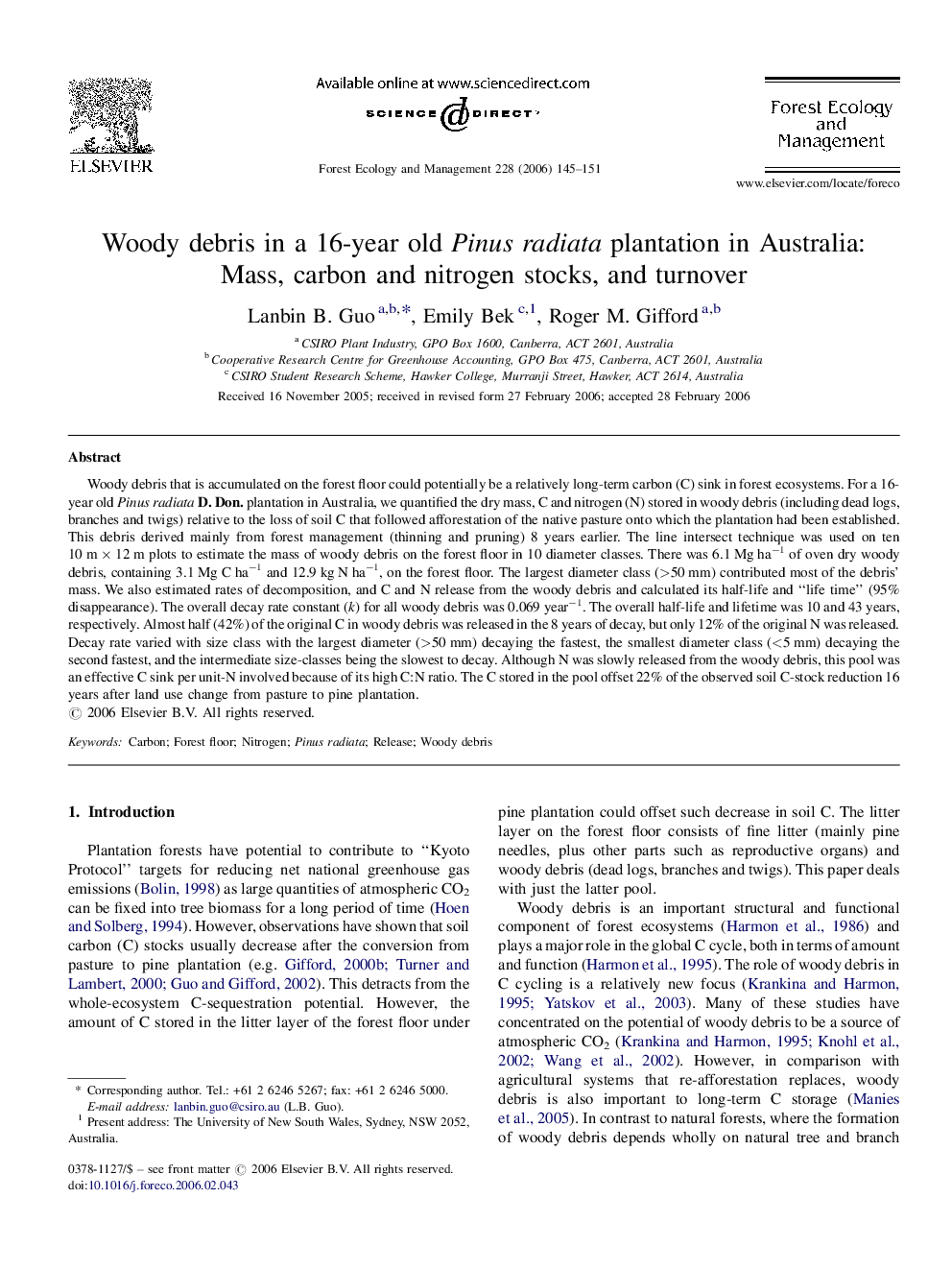| کد مقاله | کد نشریه | سال انتشار | مقاله انگلیسی | نسخه تمام متن |
|---|---|---|---|---|
| 90901 | 159407 | 2006 | 7 صفحه PDF | دانلود رایگان |

Woody debris that is accumulated on the forest floor could potentially be a relatively long-term carbon (C) sink in forest ecosystems. For a 16-year old Pinus radiataD. Don. plantation in Australia, we quantified the dry mass, C and nitrogen (N) stored in woody debris (including dead logs, branches and twigs) relative to the loss of soil C that followed afforestation of the native pasture onto which the plantation had been established. This debris derived mainly from forest management (thinning and pruning) 8 years earlier. The line intersect technique was used on ten 10 m × 12 m plots to estimate the mass of woody debris on the forest floor in 10 diameter classes. There was 6.1 Mg ha−1 of oven dry woody debris, containing 3.1 Mg C ha−1 and 12.9 kg N ha−1, on the forest floor. The largest diameter class (>50 mm) contributed most of the debris’ mass. We also estimated rates of decomposition, and C and N release from the woody debris and calculated its half-life and “life time” (95% disappearance). The overall decay rate constant (k) for all woody debris was 0.069 year−1. The overall half-life and lifetime was 10 and 43 years, respectively. Almost half (42%) of the original C in woody debris was released in the 8 years of decay, but only 12% of the original N was released. Decay rate varied with size class with the largest diameter (>50 mm) decaying the fastest, the smallest diameter class (<5 mm) decaying the second fastest, and the intermediate size-classes being the slowest to decay. Although N was slowly released from the woody debris, this pool was an effective C sink per unit-N involved because of its high C:N ratio. The C stored in the pool offset 22% of the observed soil C-stock reduction 16 years after land use change from pasture to pine plantation.
Journal: Forest Ecology and Management - Volume 228, Issues 1–3, 15 June 2006, Pages 145–151